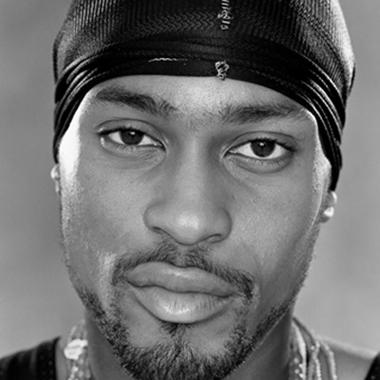
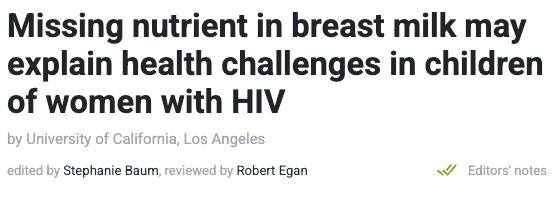
Find the original article here: https://medicalxpress.com/news/2025-10-nutrient-breasthealth- children-women.html
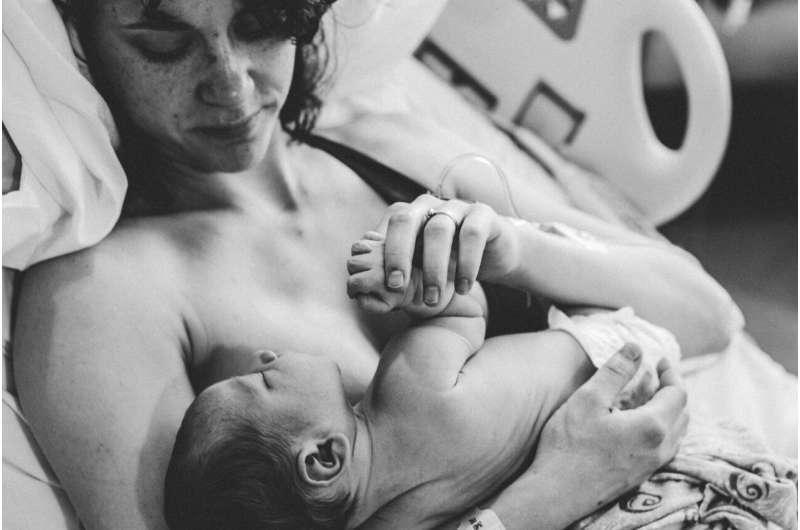
A new UCLA study reveals that breast milk from women living with HIV contains significantly lower levels of tryptophan, an essential amino acid likely important for infant immune function, growth, and brain development. This discovery may help explain why children born to women living with HIV experience higher rates of illness and developmental challenges, even
when the children themselves are not infected with the virus. The study appears in Nature Communications.
Approximately 1.3 million children are born to women living with HIV annually worldwide. Even with effective antiretroviral therapy that prevents HIV transmission, these children who are exposed to HIV but not infected continue to face a 50% increase in mortality in low-income settings along with increased risks of infections, growth problems, and cognitive challenges.
Prior to antiretroviral therapy, these children had mortality rates that were two to three times higher than infants not exposed to HIV. Understanding why these children remain vulnerable despite not being infected has been a critical gap in maternal and child health research. This study provides the first metabolic explanation for these persistent health disparities and points toward potential nutritional interventions that could protect vulnerable infants.
Researchers analyzed 1,426 breast milk samples collected over 18 months from 326 women in Zambia, 288 living with HIV and 38 without HIV, as part of a clinical trial conducted between 2001 and 2008. Using advanced metabolomics technology, the team measured over 800 different metabolites in the milk samples collected at multiple timepoints, from one week postpartum through 18 months. They then validated their findings in a second cohort of 47 women from Haiti who were receiving antiretroviral therapy.
Additionally, researchers performed targeted quantitative analysis of tryptophan and kynurenine levels in both breast milk and blood plasma to understand whether the depletion was localized to milk or reflected systemic changes in the mothers' bodies.
Breast milk from women living with HIV contained significantly lower tryptophan levels throughout the entire 18-month study period, with concentrations approximately 50% lower than in milk from women without HIV. The kynurenine-to-tryptophan ratio, a marker of immune activation, was significantly elevated at all study visits. Plasma measurements also found lower tryptophan levels in mothers living with HIV, suggesting that the decreased level of tryptophan in milk stems from systemic depletion
likely secondary to reduced intestinal absorption rather than impaired transfer to milk.
The research team also identified elevated levels of a newly discovered antiviral compound called ddhC in the milk of women living with HIV, along with increased cytosine and dimethylarginine, all markers consistent with chronic viral inflammation and interferon activation. These metabolic alterations persisted even in the validation cohort of women on antiretroviral therapy with higher immune function, indicating the pattern remains relevant in modern treatment settings.
Researchers emphasize that these findings require careful follow-up before any nutritional interventions can be recommended. The team plans to investigate whether tryptophan supplementation in animal models of chronic viral inflammation can safely improve immune function, growth, and cognitive development without unintended consequences.
Since the inflammatory environment in HIV infection drives tryptophan down pathways that can produce neurotoxic metabolites, simply replacing tryptophan without modulating these pathways could potentially cause harm. Future studies will also explore whether infants of mothers living with HIV have reduced systemic tryptophan levels and alterations in the way their bodies process tryptophan. If safe and effective interventions are identified, they could benefit the 1.3 million children born annually to women living with HIV worldwide.
"We've known for years that children born to mothers living with HIV face greater health challenges, but we didn't fully understand why," said Dr. Grace Aldrovandi, corresponding author of the study and professor of pediatrics and chief of the Division of Infectious Diseases at UCLA's David Geffen School of Medicine.
"This study reveals that tryptophan deficiency and altered metabolism may serve as a common denominator explaining the immune, growth, and cognitive differences we see in these children."
"What's particularly striking is that this metabolic signature persists even when mothers are on effective antiretroviral therapy," added Dr. Nicole Tobin, professor of pediatrics at the UCLA David Geffen School of Medicine
and the study's lead author. "That helps explain why these children continue to need extra support despite advances in HIV treatment."
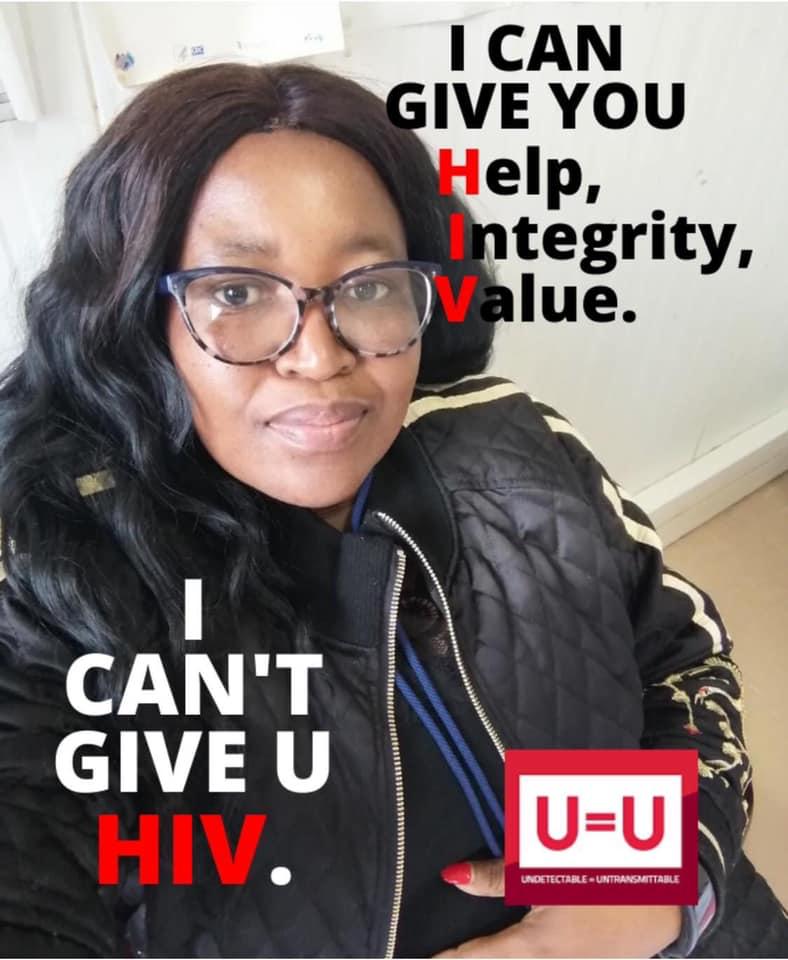

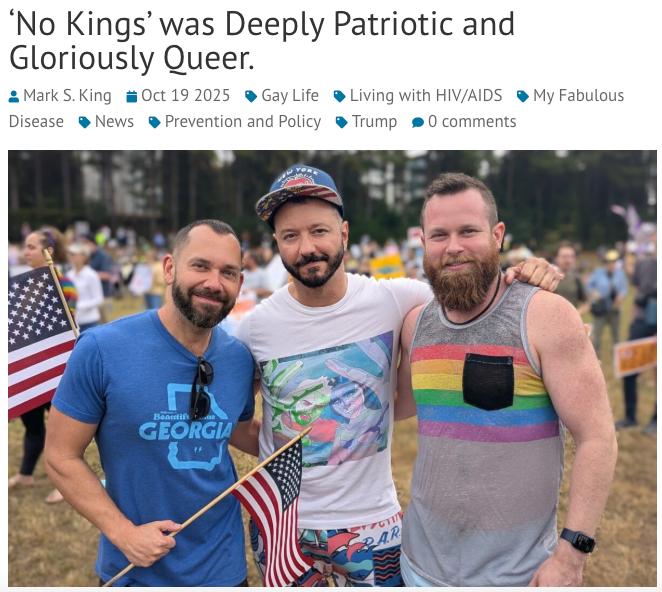
Find this blog and many others here: https://marksking.com
It would be naive to suggest that the queer community invented cheeky protests. Long before inflatable animal costumes, or ACT UP protests, or Black civil rights activists sitting at lunch counters, or women’s suffrage demonstrations, there were barrels of tea being dumped into Boston Harbor. The history of witty and memorable protests began with anyone who had a bone to pick and a taste for irony.
Still, the ‘No Kings’ protest, at least the one in Atlanta I attended on October 18, proved that modern day protests can be inventive, downright patriotic, and gloriously queer.
First, the vibe. I would have to harken back to my childhood growing up on Air Force bases to conjure the feeling of the Fourth of July that permeated the No Kings rally in Atlanta.
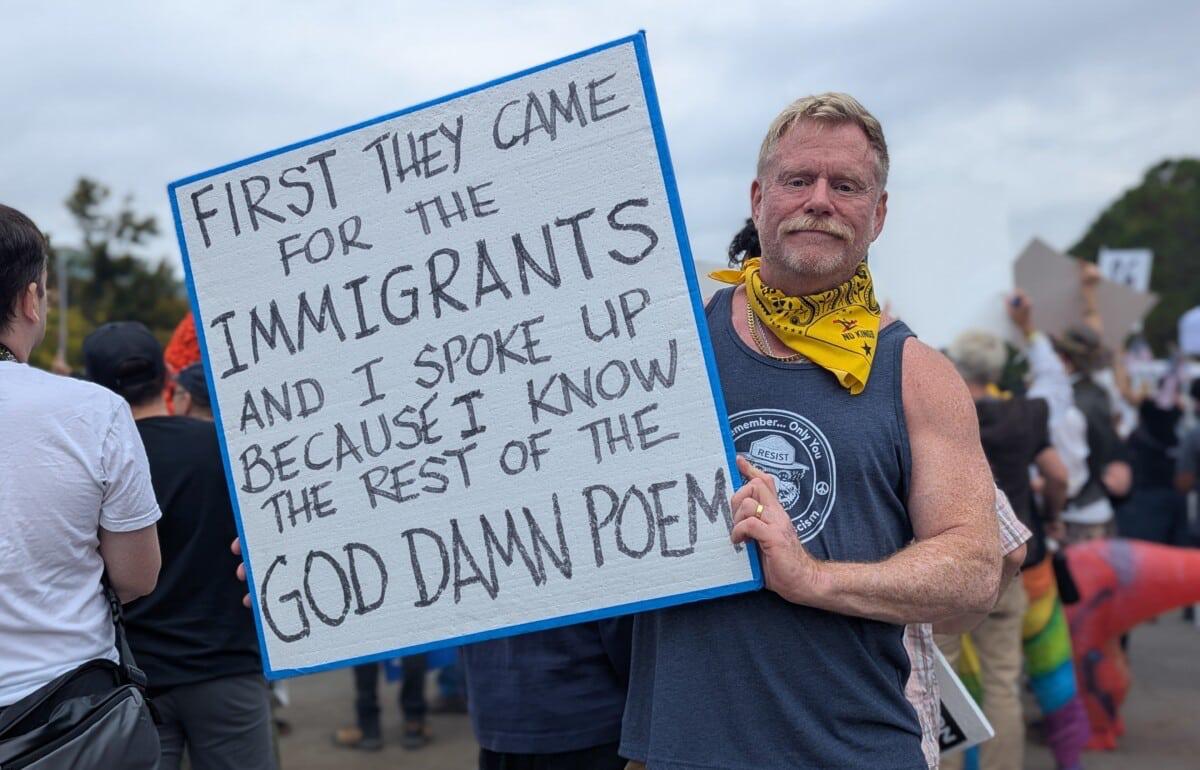
Sure, you might find more American flags waving at a political convention, but that sea of red, white and blue feels performative in contrast to the flags flying on Saturday. The people bearing the Stars and Stripes at No Kings actually meant it. It was an atmosphere of sincere, incandescent patriotism and it gave me chills, again and again, throughout the day.
Snapshots that will stay with me from that day include senior citizens sitting on the fold-up lawn chairs they brought along. Baby strollers with flags waving in tiny hands. Gay couples holding one another and bearing t-shirts calling out discrimination of all sorts. A lone lesbian triumphantly waving the LGBT flag like the emotional climax of Les Misérables.
It all flew in the face of the absurd, gaslighting claim on the part of the Republican leadership that No Kings was somehow anti-American. It has been a long time since
I was this proud of my country. And it deepened my resolve to continue flying the American flag on the front porch of my house. We are patriots, too.
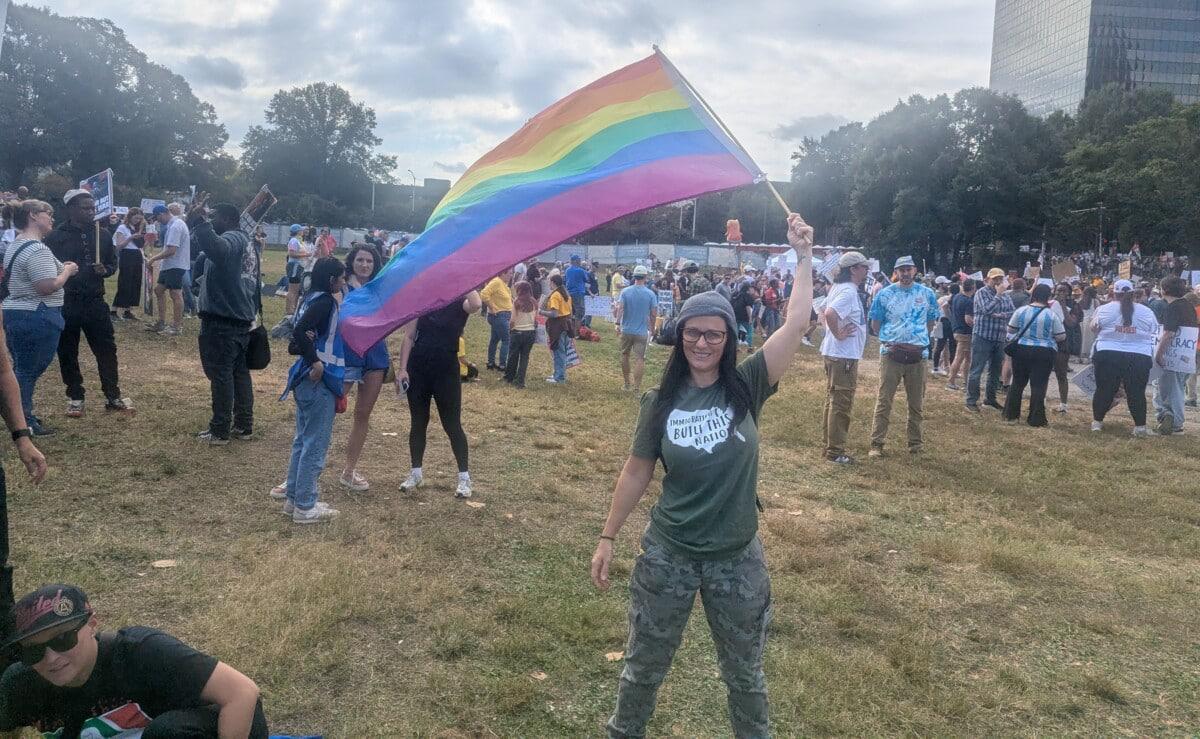
The speakers from the main stage, largely Black advocates from a host of sponsor organizations, pleaded for unity and equity while beseeching the crowd to vote in every election available to us – while we still can. If there was a disconnect at all between the leaders onstage and the thousands of faces watching and cheering, it might have been the surprising demographic makeup of attendees; the crowd was overwhelmingly white, more so than the demographics of Atlanta would suggest .
Such are the costs that people of color face when exercising their First Amendment rights in the current climate, alongside the reality of rally volunteers being carefully trained on how to respond to violence or an active shooter.
Even in an environment of joyful celebration and community, some of us, understandably, have heightened levels of anxiety and alarm.
Moving past fear being used as a cudgel against our nation’s most vulnerable was a constant refrain from the event stage. My hope is that the next rally and protest –
and God knows there will be more, as we continue exercising our patriotic duty –will be even larger, and strength and safety will be in the sheer numbers.
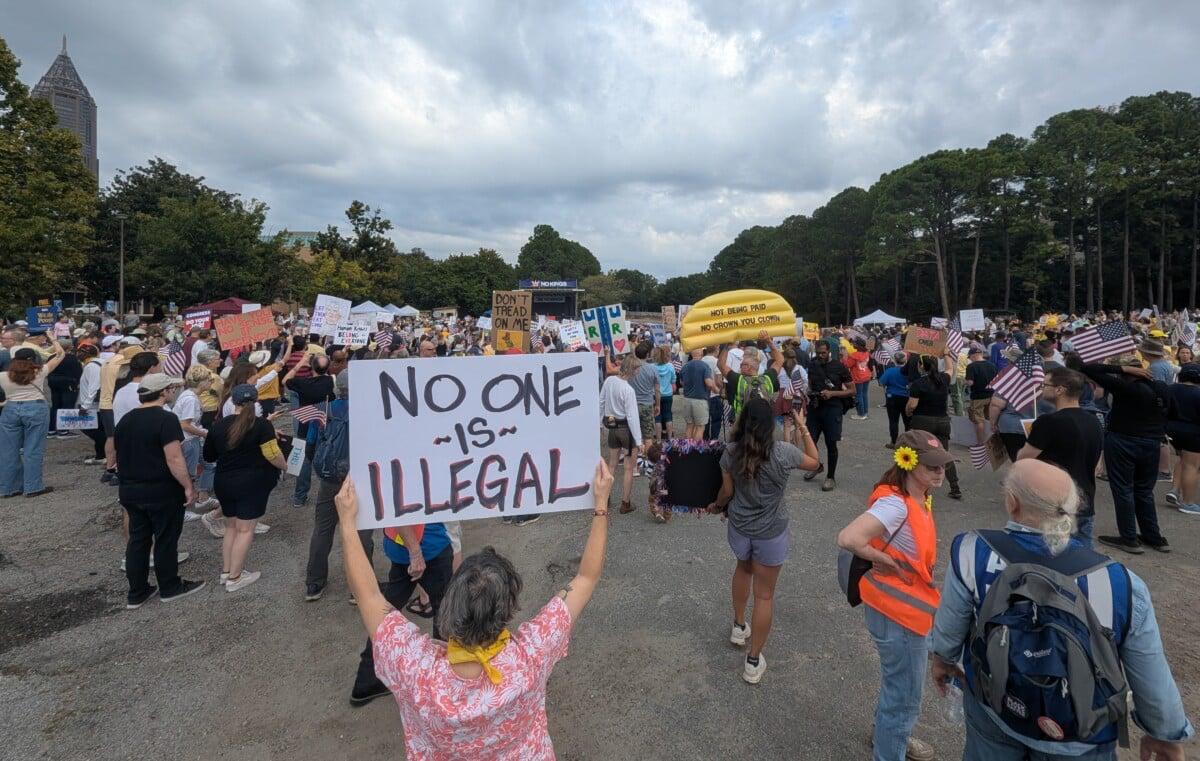
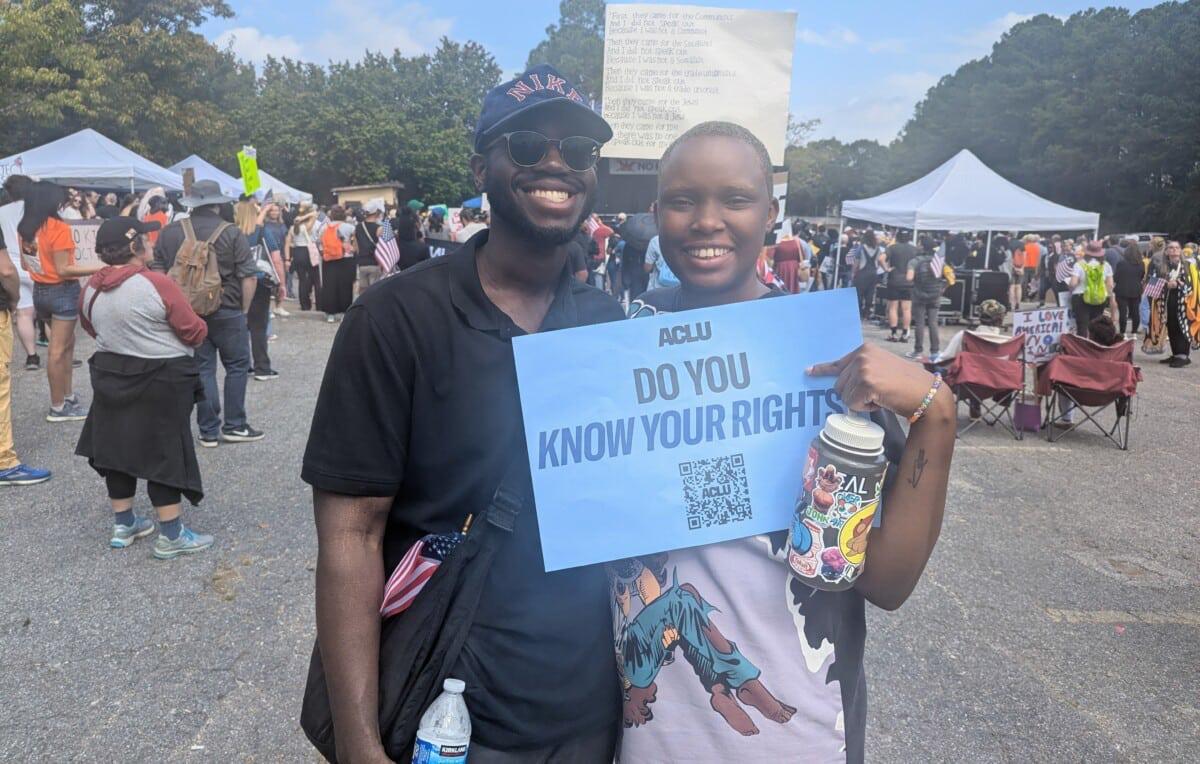

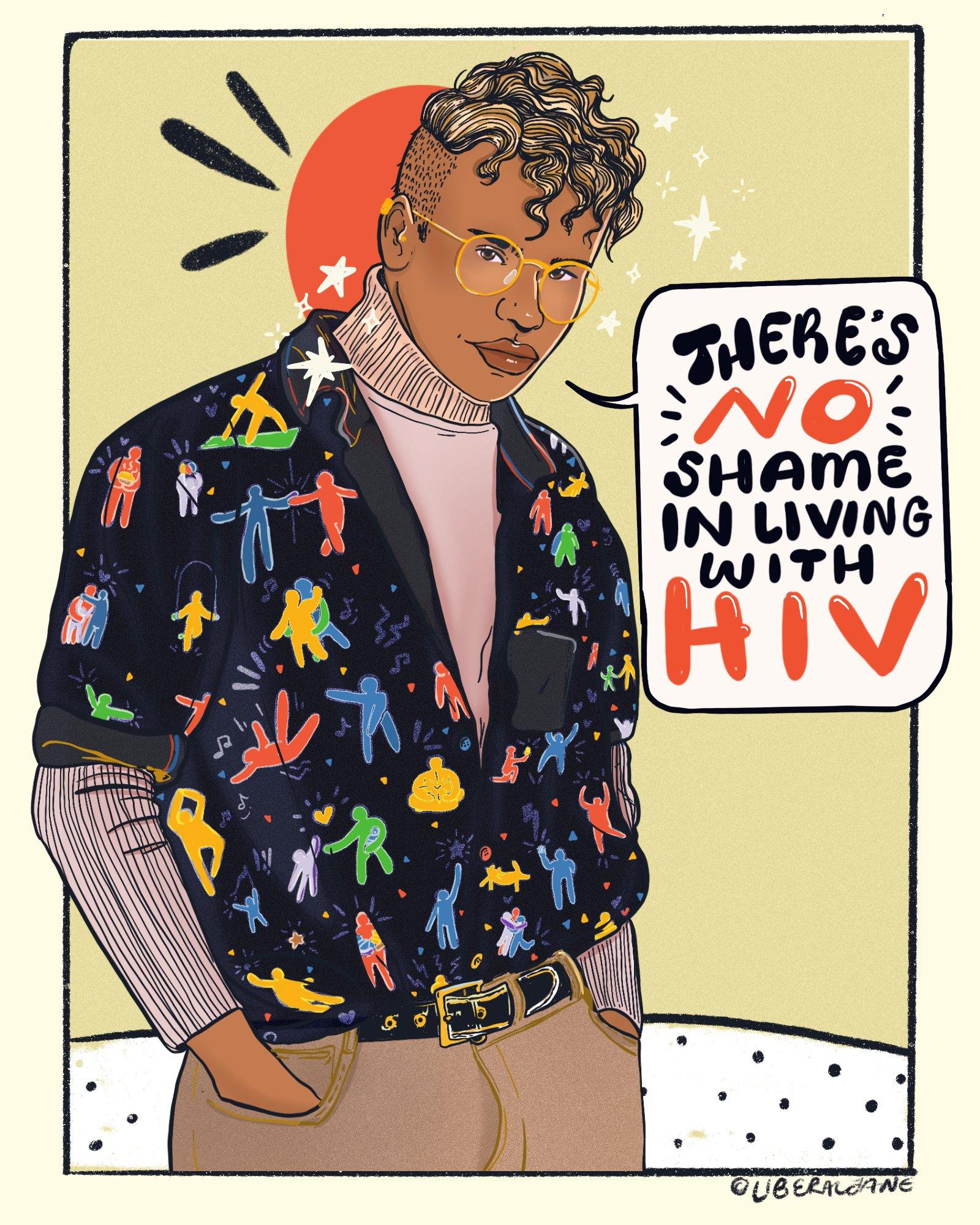
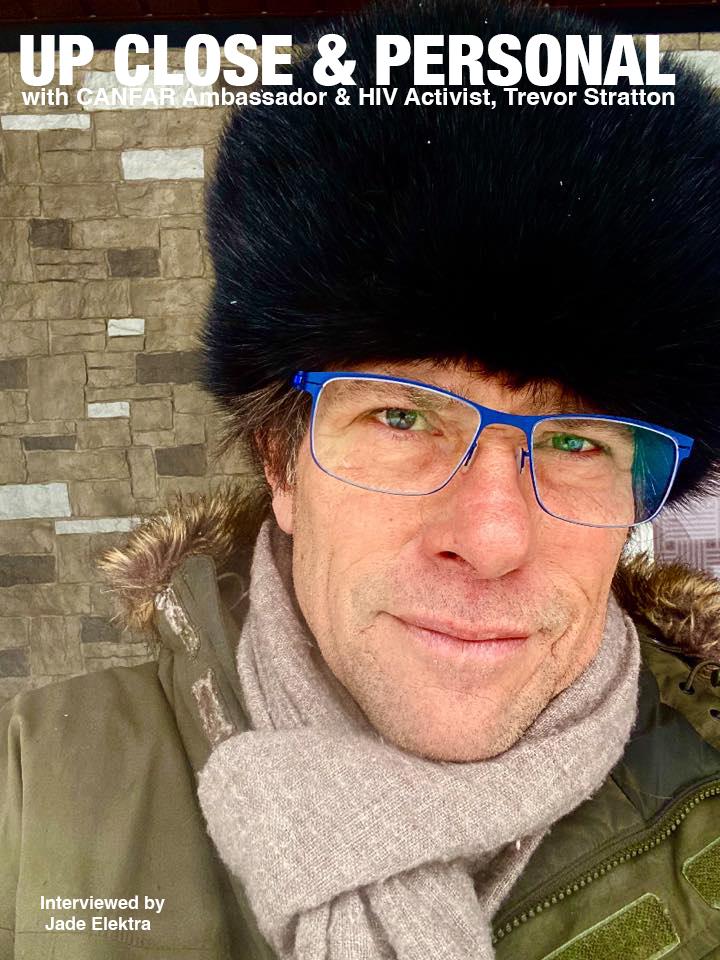
You know...I've been a CANFAR Ambassador for eight years and I have worked with many other HIV+ Activists. This month I'd like to introduce you to one of CANFAR Board Member and Ambassador who's been a very important part of the team. I am pleased introduce our readers to Trevor Stratton.
JE: Trevor...thank you so much for taking time out of your busy schedule to talk with us. I believe our readers will appreciate finding out about you and your work. How are you today?
TS: I’m doing ok. I feel healthy and strong. I’ve been clearing a path through the forest of my backyard for the last few months, so my body is sore, but that helps me forget about trying to catch up with the work that I do for the Indigenous community response to HIV, viral hepatitis, sexually transmitted infections and tuberculosis in Canada and globally. Just like anyone else, my life has challenges and setbacks. But I’m content and I have enough.
JE: We've worked together as ambassadors for years, but I don't think I we've ever really spoken about your background. To be honest, I was surprised when I found out that you are native. Would you mind telling us a little about your background and where you were born?
TS: Yeah, sure. Because I’m so light skinned, most people who are not Indigenous don’t know I’m First Nations unless I tell them but a lot of Indigenous people in Canada who I meet for the first time recognize my Indigeneity as soon as I start speaking. You see, my dad was 5th generation English Canadian. That’s where my very English name comes from. But my Anishinabe spirit name is Binessi Odaawon, which translates roughly into “Heart of Thunderbird”. My mom was born and raised on Mississaugas of the Credit First Nation which is about 30 minutes south of Hamilton in Ontario. Our traditional territory includes Toronto, Hamilton and the Niagara region. We call our community, “New Credit”, for short. My parents were divorced when I was quite young, and I was raised by my mom and our extended family on the Ojibwa side.
But I remember when I was just a little boy, maybe 6 years old, this one time my younger brother and I were fighting over the plastic cowboys and Indians action figures on the basement floor, and it got pretty violent. My mother ran down the stairs and pulled us apart to ask what all the fighting and screaming was about. We told her that we were fighting over who would be the cowboys (the good guys) and who would be the Indians (the bad guys). She looked at us with love in her eyes and sat down on the bottom

step of the stairs and we sat cross legged in front of her. She said, “You know boys, we’re Indians.”
Both of us were shocked. She told us that she was born and raised on an Indian reservation and went to a one room schoolhouse on the reserve. She told us that our Mohawk grandmother went to the Mush Hole, the Mohawk Institute in Brantford, Ontario. It is considered Canada's first residential school, originally opening as a day school in 1828 and later accepting boarders in 1831, serving as a model for many other institutions. Operated by the Anglican Church with the goal of assimilating Indigenous children into Euro-Canadian culture, the school eventually closed its doors in 1970.
My mom hugged us both at the same time and I’ll never forget how good it felt to hug together like that. After my mom went back upstairs, the fighting resumed. But this time, both of us wanted to be the Indians (the good guys!).
Indigenous Peoples come in many colours and pigments. My mom happened to have a lighter complexion that many of her siblings and she could actually pass for white most of the time. When she became a young adult, she didn’t tell people that she was Indigenous so that she could avoid the racism and discrimination most of our people felt at that time. She was ashamed of being Indigenous because that’s what our people learned by the Europeans, that we were dirty pagans and needed to be clean and Christian. But even as a Christian, my mom faced the same racism. She decided to protect herself by staying invisible. After the divorce, my mom experienced mental health issues and addictions. She was never really a happy person. This shame was passed down from generation to generation, and I had to deal with this feeling of being “not enough” as I grew up and hit puberty. I didn’t really know who I was. I was a little white looking kid with long hair who had a little bit of a strange accent, and I didn’t really have a mentor or older guide or Elder helping me to navigate the world and find out who I really was. I remember when I was exploring my sexuality as a teenager, some of my older family members said that I was, “possessed by the demon of lust.” That was a hard pill for me to swallow. I needed to get out of my little world. At 17, I quit high school, quit my part time job and left home to hitchhike around and explore my world.
Then things got really interesting…
JE: I know that most folks only see me as Black or African American, but I am also part Puerto Rican and Caucasian. So, thank you for sharing. Now, if you have read any of our interviews you probably know that this is where we ask about how long you have been positive and what it was like when you were diagnosed.
TS: I was diagnosed with HIV when I was 25 years old in 1990. That was 35 years ago. I had just returned from hitchhiking around Europe for 5 months. I was young and cute and very curious and rather naïve. I longed for love and acceptance. I was searching for myself on a different continent. I had lots of sex, some of it enjoyable, some of it was transactional. I didn’t have a lot of money, and it was very helpful if I could find a place to sleep for free. If I wasn’t camping beside a highway somewhere, I was looking for someone to bunk up with for the night or even for a week, so I’d have a companion to show me around.

In 1990, many gay guys were afraid of having sex. I remember kissing with a guy one time and realizing that my sex partner was feeling around my lymph nodes with his fingers to see if he could detect swelling. That was one of the symptoms of AIDS: swollen lymph nodes. It was so strange to know that they were secretly trying to protect themselves from acquiring HIV. There were so many gay men dying of AIDS back then. It was quite a scary time to be a young gay man.
But I didn’t really do anything to protect myself from getting HIV. Can I be honest?... I didn’t really value my life very highly. I thought, “What’s the big deal if I died?” Who would care? I was a confused and rather angry young man. I experimented with condoms, but I didn’t like using them. I had all
kinds of illogical reasons for not using condoms. I was involved in the sex trade, which evolved from hitchhiking so much. Eventually, I learned how to get tricks on the streets known for gay hustlers. I met another teenaged guy my age eventually and he became my first boyfriend. He introduced me to a teenaged girl who lived across the hall from him, and she and I began a relationship. And that REALLY confused me because I didn’t realize how attracted I was to women as well as men. My girlfriend got pregnant, and we became teenaged parents of a baby boy in 1984 when I was 19.
Our relationship did not last long, and my girlfriend and I separated within a year of our son’s birth. I began another relationship with a young First Nations woman, and we moved to Toronto. After that relationship ended, I started to explore the gay community and neighbourhoods in downtown Toronto.
AIDS was ravaging the gay community, and my friends were dying in droves. I was getting more and more into drugs as they became available to me. I experimented with lots of different substances in my 20s in Toronto. I always had a job and made cash on the side from “generous older men.” Eventually, I saved up enough money to quit my job and fly to Europe on my 25th birthday to explore and “find myself.”
JE: I'm curious...what made you decide to come out as positive and how did your activism start?
TS: I used to understand what “coming out” meant but it’s less clear to me now. I came out to people one at a time at first, but it seems to be an ongoing process, even 35 years after my diagnosis.
After I came back from my 5-month Europe backpacking adventure in the fall of 1990, I tested positive for HIV. The first person I told was a friend who had already been diagnosed with before me within the same year. We had sex together a few times in the past but others I had had sex with were also testing positive. So many of us were acquiring HIV. My friend, Steven’s response was, “Wanna go coffin shopping together?” Of course, that made me laugh and it was actually good medicine for me, to be able to talk to another person living with HIV. We remained friends for a decade until he eventually died.
The second person I told was someone who used to pay me for sex who eventually became a very important mentor in my life and helped me to navigate within my world, almost a surrogate father. My own father was absent from my life at that time, but Joe was always there when I needed to talk. His first response was fear for his own safety, when I told him I was

poz. In 1990, many people did not want to know about HIV & AIDS because of the stigma. But after he read some pamphlets and background on HIV from CATIE (a brand-new organization called the Community AIDS Treatment Information Exchange serving Toronto), he became more comfortable and realized that he was not at risk, just because I lived upstairs and ate meals with him and the other boarders at his place. I told a few friends, but I was not publicly disclosed at that time, I was just trying to live what was left of my short life. There were no effective treatments for HIV in the first half of the 1990s.
A couple of years after my diagnosis I borrowed a small amount of cash and took a vacation from my job to go to Jamaica on vacation for a week. While
I was camping on the beach, I met an American woman from New York City. We spent the night together cuddling in her tent and exchanged contact information. A month later, I disclosed to her over the phone, not only about having HIV but I also let her know that I had only been with men for the last 6 years. She came to visit me in Toronto, and we started a 10-year relationship and began organic farming first in Seattle, Washington. By 1998, we had moved to Vancouver Island and bushwhacked a small organic garden there. That’s when I was contacted by the mother of my son who told me that David wanted to know who his father was. I felt that I had to disclose my HIV status to his mom as a first step. This led to my partner Jacquie and I moving to Ontario to start a farm there and to be close to David.
But I started getting really sick. It had been 8 years since my HIV diagnosis. I was getting skinny and had all kinds of opportunistic infections that were taking hold. I was truly suffering and had no energy left. It was really difficult for me just to walk to the bathroom. My partner, Jacquie, and David begged me to see an HIV specialist. I had been avoiding doctors because they all told me to prepare to die and I could not accept that. My theory was that I would live as healthy a life as possible and maybe someday science would find a treatment and HIV would be something that people could live with, like diabetes.
That day had already arrived in 1996 when antiretroviral treatment was discovered and people living with HIV were getting better, standing up from their deathbeds and going back to work. But I didn’t believe it. I didn’t feel worthy and I was very upset that only people living with HIV in rich countries had access to the new life-saving medications while those in socalled “poor” countries were dying of AIDS in the worst of conditions. It was very difficult for me to accept this injustice. Why should I get treatment and the gift of life while they were denied treatment and suffering and dying. It was my wife and my son who convinced me to save myself. I went on treatment and almost instantly started to get healthy again.
At this time, an important friend of mine named Art Zoccole reached out to me. I had disclosed to him because he was the executive director of 2Spirited People of the 1st Nations (2-Spirits), Canada’s first Indigenous AIDS service organization. He was also one of the founders of the Canadian Aboriginal AIDS Network (CAAN). He was kind and encouraging when he invited me to CAAN’s annual general meeting in Toronto in 1999. At the conference I disclosed my HIV status in front of hundreds of people in the safety bubble that the group created there. On the final day, an Indigenous Haida Elder found me and gave me tobacco. She said, “Thank you for allowing us to have this meeting on the traditional territory of the
Mississaugas of the Credit First Nation. Please take this sacred medicine to an Elder in your community and thank them.”

But I didn’t know any traditional Elders. But I accepted this mission. I was chuckling to myself that I was now on a mission from God. I was instructed to take this sacred healing medicine from the Indigenous HIV gathering to my community. I had participated in a 2-day healing circle with other Indigenous people living with HIV which had lifted me up emotionally, mentally and spiritually. The pharmaceutical drugs were taking care of my physical health but the holistic medicine from the Indigenous community was addressing all of the other aspects of my holistic health. The traditional Indigenous healthcare system, so long denied to our people, was finally
beginning to open up to me. I realized that access to my own ancient Indigenous culture was possible.
It felt like coming home… I felt welcome. I felt useful. I felt the love.
JE: I know that you work with a lot of organizations that help policy change around the world. Could you tell us a little about your work and what's your goal in your activism?
TS: There is a lot of injustice and greed in the world. There are so many imbalances that were created by human beings. The rest of the world seems to know how to work together to maintain balance but the humans, well, we’re out of balance and we’re fucking up the world, and in the process, fucking up our own future as humankind.
As humans, we have a lot of shared goals that we set for ourselves together in the Sustainable Development Goals (SDGs), the articles of the UN Declaration on the Rights of Indigenous Peoples or the Global AIDS Strategy. I’ve personally signed on to these and many other human rights goals and I’m committed to helping the world to achieve them. My overall goal is to be a part of the effort to bring back balance, to help our Mother Earth to be healthier and in the process, to make humankind healthier.
Scientists are starting to label this ancient Indigenous knowledge as “One Health”. Apparently, science has now proven that “everything is connected” and that the human health is connected to climate health. Indigenous Peoples know that everything that exists in the universe are our relatives. They are “all my relations”.
The slogan of “Think Global, Act Local” has always been a compass for me. Each of us can make a positive difference in our own backyards and in our own communities and collectively, we change the world together. There will always be negative forces that pull us toward chaos, danger and imbalance, but I try to stay on the positive side to try to help establish the balance between physical, emotional, mental and spiritual health. We are all spiritual warriors, but which side are you on?
The local work to nurture the love and healing that belongs to the people eventually led me to work on the provincial, national and international levels for almost 3 decades. While I was off work trying to get better after beating AIDS, I was elected to the board of directors for 2-Spirits in Toronto, the Ontario Aboriginal HIV/AIDS Strategy (Oahas) and CAAN. By 2005 I had enough external support and internal confidence to return to the paid workforce. I resigned from these boards and was invited to work at entry

level positions at 2-Spirits first and then CAAN. I was working mostly with other Indigenous people living with HIV in Toronto and nationally in Canada. In 2011, I started as the coordinator of the International Indigenous Working Group on HIV & AIDS (IIWGHA) on behalf of CAAN and I continued that work till about 2023. This work involved engagement with UNAIDS, the UN Permanent Forum on Indigenous Issues (UNPFII), the International AIDS Society, World Health Organization, Pan-American Health Organization, International Labour Organization, the Global Indigenous StopTB Initiative, the Global Fund to Fight AIDS, TB and Malaria, and many other international bodies.
You could say that disclosing my HIV and being supported by my family, my community and my close friends was the beginning of my activism. I’ve been continually “disclosing” ever since then.
Yes, it’s hard to stay positive and hopeful when the pendulum is swinging toward global imbalance that threatens human health and well-being. But I will keep wearing my spiritual armour to continue the struggle to maintain balance and keep the love flowing to and from the universe.
I owe it to the people who do not have access to life-saving healthcare because of human greed.
My definition is that holistic health is about thriving, not simply “the absence of disease.” We all deserve to thrive and to live in bliss. This is the goal – to live blissfully!
JE: You and I along with Billy Newton Davis were featured in CANFAR's first short film called "STILL HERE". We all attended the premiere screening on October 1st. What was the experience like seeing yourself on the big screen?
TS: It’s always a bit shocking to see myself on the big screen, especially in the context of aging and because I’m actually quite introverted. In my early activism I always said that I was there for the work, not for recognition. But after a few years of activism, it seemed like more and more people were getting to know that I was an Indigenous human rights and health activist living with HIV. Requests for my participation in interviews, newsletter articles and short health promotion videos were increasing month over month. I soon realized that I needed to use this notoriety to help with the Indigenous HIV response. I think that one of the earliest videos I appeared in was titled, “River of Healing.” Produced by The Union of Ontario Indians HIV/AIDS Program in 2012 in collaboration with Regan Pictures, The River of Healing features the participation of the CAAN Communities, Alliances &
Networks, the Ontario Aboriginal HIV/ AIDS Strategy (Oahas), Nurture North, the AIDS Committee of North Bay and Area, and others impacted by HIV/AIDS. "The video emphasizes the positive effects, such as healing, that can be brought about through effective methods of harm reduction. The aim of this video is to reduce the stigma and discrimination associated with drug use in our communities." This video was used in various Indigenous communities in the Ontario region at a time when many First Nations were picking up and adapting the tools used for harm reduction.

Another very impactful video I was involved in planning, in which I was one of the Indigenous people living with HIV featured, was “Strong Medicine”, an
educational video developed by CAAN and CATIE, with and for Indigenous people living with HIV. “By weaving together Indigenous knowledges of culture and wellness and Western knowledge of HIV testing and treatment, this video shares accurate information about HIV testing and treatment. It encourages people to get tested and to start, resume or stay on HIV treatment for their own health and wellness.” Together, CAAN and CATIE encourage individuals and organizations to host their own screenings of Strong Medicine in their communities. An online facilitator’s guide can be found online and you can place an order for a free promotional poster. Attending public screenings of Strong Medicine was the first time I had seen my image on the big screen in a theatre, and I was embarrassed. I’m just not used to being that close up and personal.
The “2-Spirit Stories Re: Membering Documentary”, released in the spring of 2024, honours “the strength and activism of Indigenous and 2 Spirit leaders. Each segment is a sacred offering, unveiling the dedication and communal strength that emerged from the depths of adversity. It is a spiritual journey, immersing audiences in the sacred essence of the 2-Spirit community’s integral role in shaping the narrative of the HIV/AIDS crisis.”
But I never get used to it. As I said, I’m an introvert and yet I accept media interviews, public speaking engagements, poster boy photo shoots, meetings with federal ministers, MPs and senators and stints at the UN such as working on the UNAIDS PCB NGO Delegation. These are all publicly facing activities and they all drain my introvert batteries. My strategy for not burning out is that I use my extrovert mask for working with people and participating in these types of public activities. You see, I put on my mask and act extroverted for a few days at a time and then I need to go home and recharge my drained energy in the silence of my own home and by accessing nature. Nature is the best medicine. I think my superpower is that I can be extremely vulnerable in public and share the most intimate details of my experiences or feelings if I think it will help people who need it the most. If I had to do this kind of work in the private sector selling something I don’t value, I would not be able to sustain this level of positivity and productivity. I know that I do this work as a servant, under the watchful eye of the people I work for: community members.
Sorry Jade, I bet you didn’t think my answer would be so complicated. I really don’t get a thrill out of seeing myself on the big screen. It doesn’t really feed by energy. What feeds my spirit is the hope that together Billy Newton Davis, you and I can make a positive difference and change the world for the better, even just a little bit.
That is a really good feeling. That’s what keeps me going: love for the people and hope for a healthy future where everyone has enough.
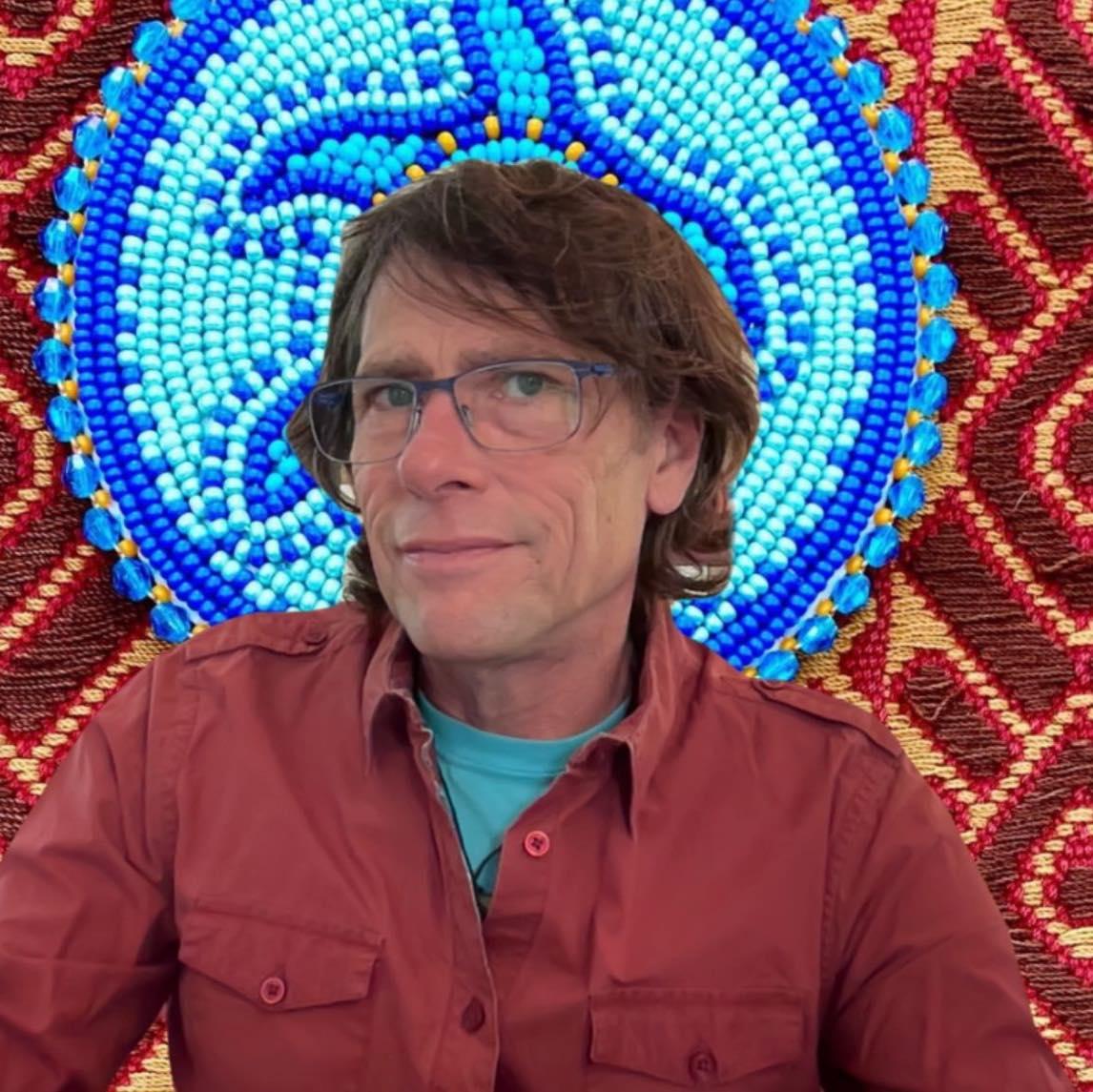
JE: I know that you represent the HIV+ Community, but like myself we are all getting older. We had an amazing turnout at the premiere and a great conversation during the Q&A. What goals do you think we as a community should set for our future as more and more positive people are living longer?
TS: Yeah, representation is a funny thing. I only represent when I have permission from the group and there are so many levels of consent. For
example, for this interview, I represent no one but myself but there are other times when I do represent a formal group of people. There was a time, from 2016-2018 when I represented all of civil society responding to HIV in North America. I was one of two North American Delegates to the NGO Delegation of the UNAIDS Programme Coordinating Board (PCB). That was a strange feeling, but luckily there was also a delegate from the USA and together we did the best we could. There are other times when I represent my organization, CAAN. And there are still other instances where I represent other groupings of human beings like my volunteer work as Board member of the Canadian Foundation for AIDS Research (CANFAR).
But did you hear? UNAIDS is closing next year, 4 years before the UN Sustainable Development Goals (SDGs) are achieved (or not) in 2030. What the fuck!!?? HIV rates are rising in Canada. You’ve heard of the G7, it’s a forum for leaders from major industrialized democracies to discuss and address global economic challenges and other issues like security, climate change, and development. And Canada is the only G7 country where HIV rates are going up. This can only be a lack of political will. For 2020, we had the 90-90-90 targets where 90% of people with HIV have been diagnosed with HIV, 90% of people diagnosed with HIV are on HIV treatment and 90% of people on HIV treatment have achieved viral suppression. For 2020, Canada came pretty close to achieving those goals, but we are certainly missing the 95-95-95 targets for 2025 and way off track for the elimination of AIDS as a public health threat by 2030, the target for the SDGs. We have set so many goals for HIV in Canada and globally and yet HIV rates are increasing. The goals are already there. We don’t need me to reinvent what communities and caring professionals have already set as goals. I think the problem is more about public awareness and political will. Indigenous Peoples, African, Black & Caribbean people, people who use drugs, newcomers and still acquiring HIV in large numbers in Canada and this is not ok. We can do better to achieve health equity in Canada. Canada is a fabulously rich and privileged country.
Let’s face it, HIV is no longer the flavour of the day in the news cycles and hasn’t been for a long time, “What? AIDS is still a thing?” Yes, HIV is still a threat to global health and the health of our communities here in Canada too. Let’s join up, link arms and work for the betterment of humankind and all of our relations!
JE: Again...thank you so much for doing this interview. If someone wanted to contact you or find out more about one of the organizations you work with, what's the best way to contact you?
TS:
• www.caan.ca – CAAN Communities, Alliances & Networks
• sofreeradical@yahoo.ca – Personal email
• https://www.facebook.com/trevor.stratton.58/ - Facebook
• https://www.linkedin.com/in/trevor-stratton-40655b210/ - LinkedIn
• https://www.instagram.com/sofreeradical?igsh=MWdoeXU4cnMwMTc3aQ %3D%3D&utm_source=qr – Instagram
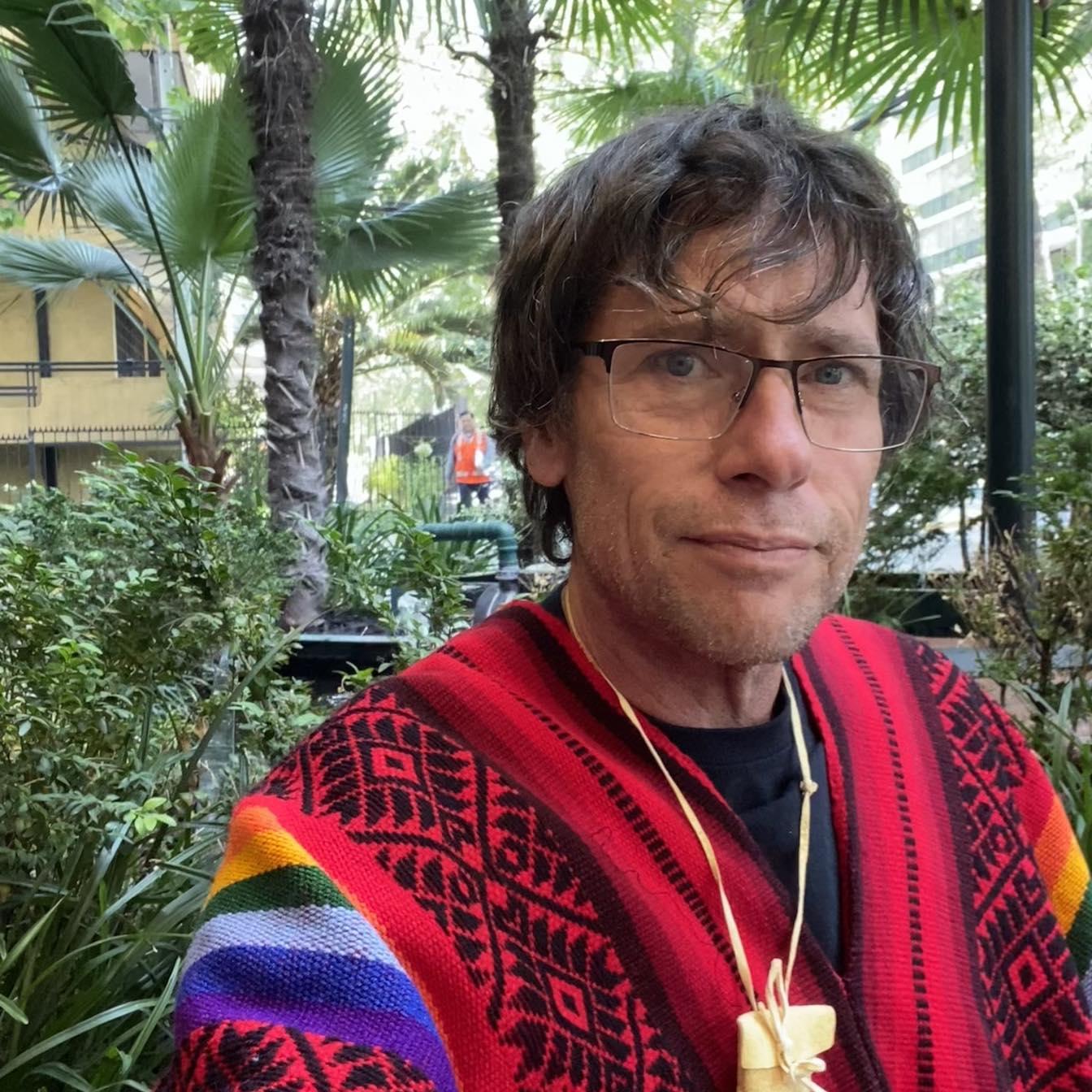

If you’re in Toronto, you should join our new LGBT Film Club called PINK CINEMA! This is an intergenerational FREE event. We meet every third Tuesday of the month at STUDIO 163. There is a suggested donation of $2 or more at the door (which goes directly to building our film library). By joining our Facebook group here: https://www.facebook.com/groups/195374003920591 you can vote on what movie we will show. Our next event is on November 18th, 2025. And our choices this month are “Female Trouble”, “Prick Up Your Ears” and “ Trick”. We have a concession stand with FREE cups of Popcorn, $1 Pops, 50¢ Candies and 50¢ Chips. So come join us! It’s a great date night! It’s not only a great Community gathering but also an opportunity to learn about our LGBTQ2+ History through cinema. Proudly sponsored by ViiV Healthcare
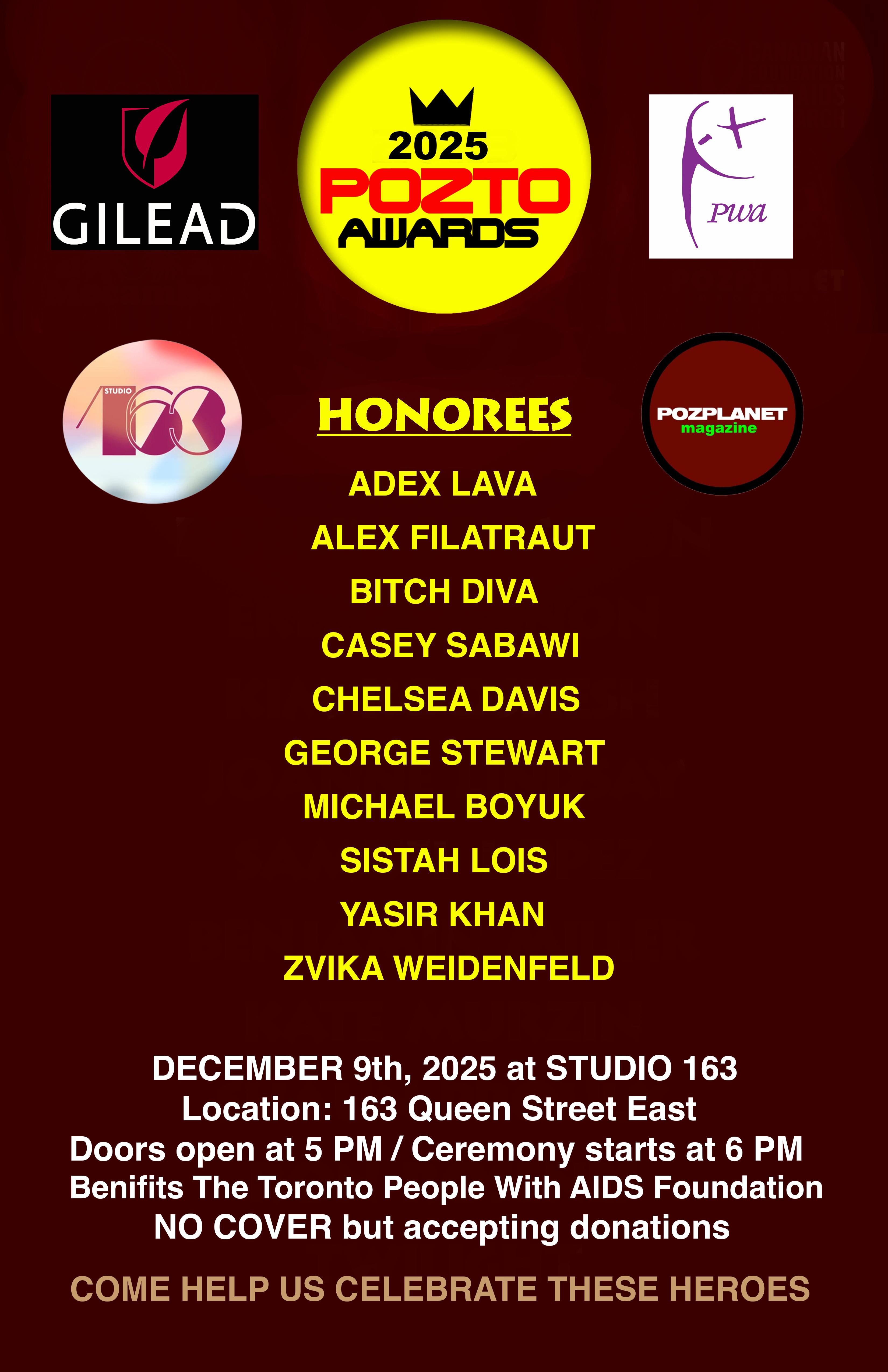
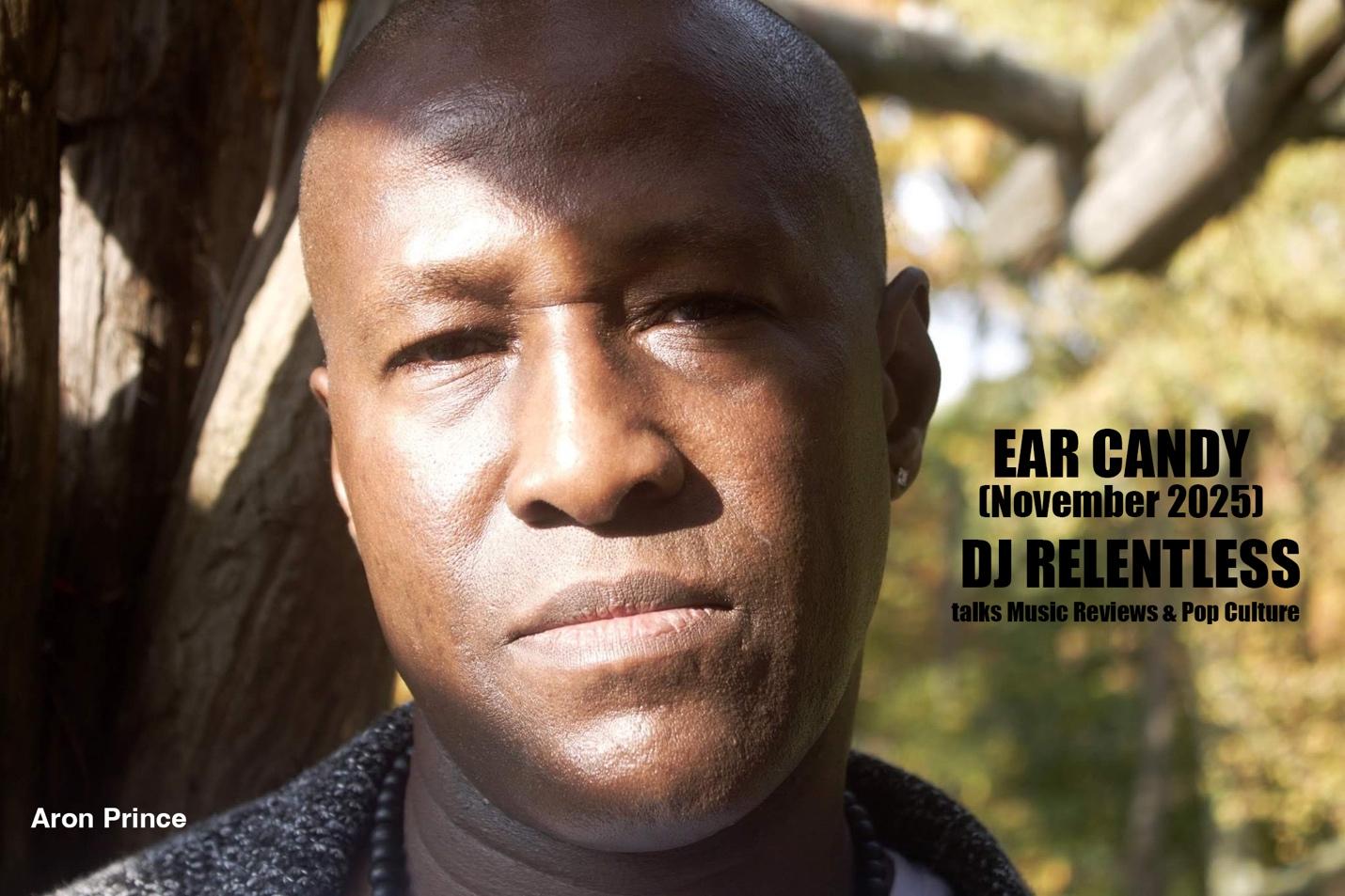
Listen to the mix here: https://www.mixcloud.com/djrelentlessny/ear-candy-november-2025 Download your free video of this mix here: https://mega.nz/file/ArcRkDjY#6ZpjS-o2U0HXtbPapjGf0Nib_VqkLEjFcv-4dTk7PcM
Subscribe to DJ Relentless’ Mixcloud page: https://www.mixcloud.com/djrelentlessny Follow DJ Relentless’ HearThis page: https://hearthis.at/djrelentlesstoronto
We all know that after September is when most recording artists release their major albums. It’s also the best time for new artists to try to break into the Top 40. Well, I have twenty-three tracks to tell you about. I’m not as pessimistic as I was last month. Not that things have gotten better, but I was encouraged by the huge “No Kings” protest last month. If the voters can turn the tide in the mid-terms there might be hope to save the United States as well as the world from the Orange Menace called “Plump”
So, let’s get started shall we?
We start off with a fairly new artist named Asha MacLean from Manhattan. I skimmed through a couple of her clips and she’s a Pop artist that seems to have not found her identity yet. Her latest single is called “Yoga” and from the music video she’s is tapping into what I like to call the bank of “Tomorrow People”…racially ambiguous. This could be a mixed raced girl doing an R&B Pop Dance song but the truth of the matter is she’s a white girl looking for a marketing opportunity. It’s a cute song. The video is shot cleverly to trick a few folks. But will this be her big break through? I think not. I give her a few more months. She’ll figure it out.
I was talking with a friend the other day who was criticizing why opinion of today’s sudden Country Boom in Pop music. I explained to him that this like the Conservative movement in the U.S. has been spreading and growing since Obama’s second term. The racism and hatred of anything of color has been simmering just below the surface. And this is why I said that the award shows have been “bending the knee” to this administration. And why you we are seeing a twang amongst Pop artists like Post Malone and Machine Gun Kelly
And while there is an uptick in Black Country Artists, watch the charts. Country radio is still mad over “Cowboy Carter”. Hell…this demographic is furious over Bad Bunny being the Superbowl Halftime Show. They’re losing their country every day! Plus, these interracial product commercials ain’t helping either!
So, while our second track “Keep On Steppin’” by Mike Clark Jr featuring Big Boogie is catchy and makes me wanna do a little two step, I know that it ain’t gon’ be in the Top 40 or on the Top Country charts. In Plump’s America the white artists are going to dominate the charts (unless it’s Latin or Urban).
Our third selection is by a good friend of mine named Aron Prince. I had the privilege of recording with Aron a couple years back for my iUnderground Pride EP as my drag persona, Jade Elektra on a track “I’m Black & I’m Gay”. Aron is a spoken word artist, and I felt his latest single embodied a message that needed to be amplified. “Show Up” is a reminder that this is all we gotta do for each other and to save the world. While Republicans are doing their last power and cash grab, we all need to be there for each other as much as we can. It is love that will win in the end. Hate is one note. It doesn’t sing.
And to further change the tone, I mixed into a hot new House track called “Edge Of Desire” by Jonas Blue & Malive. This one could be a bridge into a Latin Club set or some Afro House tracks.
Speaking of a Country Artist who has been straddling the fence of Pop, Taylor Swift has released a new album that apparently has debuted at the top of the Billboard charts. I personally am so sick of her. I have to admit that I am jealous that she gets to lay with that fine ass Travis Kelce Ever since I saw him in Ryan Murphy’s FX series “Grotesquerie” I have been smitten! Well…good for her. I chose this track because she wrote a song about his dick called “Wood”. Believe me…this is the only reason I included her in my programming for this month. On TMZ their poll said that this was in bad taste of her. I found it that amusing. So, when I heard the Valente Mashup I decided that this was the one track that I would play from her new album.
And speaking of TMZ, they kept reporting that Katy Perry & Justin Trudeau were dating. Finally, paparazzi caught them on a yacht, and they had to come clean. I guess this would explain Katy’s new single, “Crush”. Now…looking at her track record, Katy likes a man with some big “Wood” (Russel Bran, Travey McCoy, John Mayer & Orlando Bloom). So, I’m guess that Justin is packing! Did you know that Justin’s father
dated Barbra Streisand? Anyway…let’s get back to our sixth selection in this month’s mix. It’s a cute song but I don’t think that Katy will reclaim her Pop status with this one.

Katy also seems to fall hard and rushes into relationships. So, our seventh track seems perfect. The Dario Xavier Mixshow Edit of “Where Is My Husband” by RAYE is a revelation! RAYE has been a revelation for a while. Love her vocals and style. But this particular remix is a revelation because I generally don’t care for Dario Xavier’s remixes. He is one of those Circuit Queens who lives for that “sneakers-in-a-dryer” sound and all of his remixes sound the same. This is the first one that actually doesn’t! Hopefully he sees this and realizes that he needs to explore different productions for his remixes. This one is really good.
Up next is a hot House track called “Horny” by San Pacho & TOBEHONEST. Not only does it have a horn hook, but the lyrics are a double entendre for sex. My kinda track!
Our ninth selection is the Perry Twins Remix of “Heat” by Rita Ora. Great track and really funny video. Rita seems to be on a beach singing about being attracted to some one who is definitely her type. But all the people in the main shots are older, sun burned
and out of shape. While it is autumn here in North America, she seems to be in a great summer location.
So, last year this time Khalid was outed by an ex on social media. When fans started asking questions on Twitter (and yeah…I’m still not calling it “X”), he finally came out. So, as of the beginning of 2025 I have changed his listing in my library of music and videos to LGBT Artist. And the funny thing is he seems to be more comfortable in his skin since coming out. His latest single is “In Plain Sight” is great. And the Disco Fries Remix has made it even better!
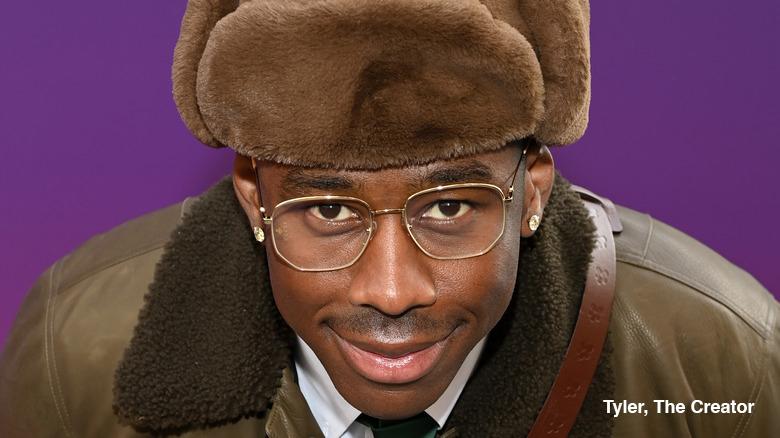
Now to be honest, every time I’ve listen to or watched Tyler, The Creator I just didn’t get it. I remember a performance for the VMAs and I was left scratching my head. And I listen to the original version of his new single “Sugar On My Tongue” and was not impressed. It wasn’t until I heard the Sefu Mix that I began to like any of his catalog. The sample of Nelly Furtado’s “Maneater” really works with his lyrics.
I was thinking about this Nicki Minaj / Cardi B feud online. Didn’t Nicki do the same thing with Lil Kim And Kim didn’t win that one because her time had past. It’s all ridiculous. This bickering online hasn’t worked for Azealia Banks. But then again, she derailed her career before it really got started. And when are Nicki and Cardi realize that there is room for everyone or that your time on the top has to come to an end. Honestly these two should be worried about Doja Cat. She’s moving into their territory and is poised to knock both of them off their thrones. And both would not have anyone to blame but themselves. You set up the blueprints for how to be the Hip Hop Queen. All some girl has to do is study and execute. And with the Sefu Remix of Doja’s “Gorgeous” is a pretty hot track. The 80s product themed music video is so fresh right
about now. There’s even a shot of her and her mother. She sings…she raps. She looks great on camera. She’s survived controversy and cancellation. Sounds like the blueprint to a “T”.
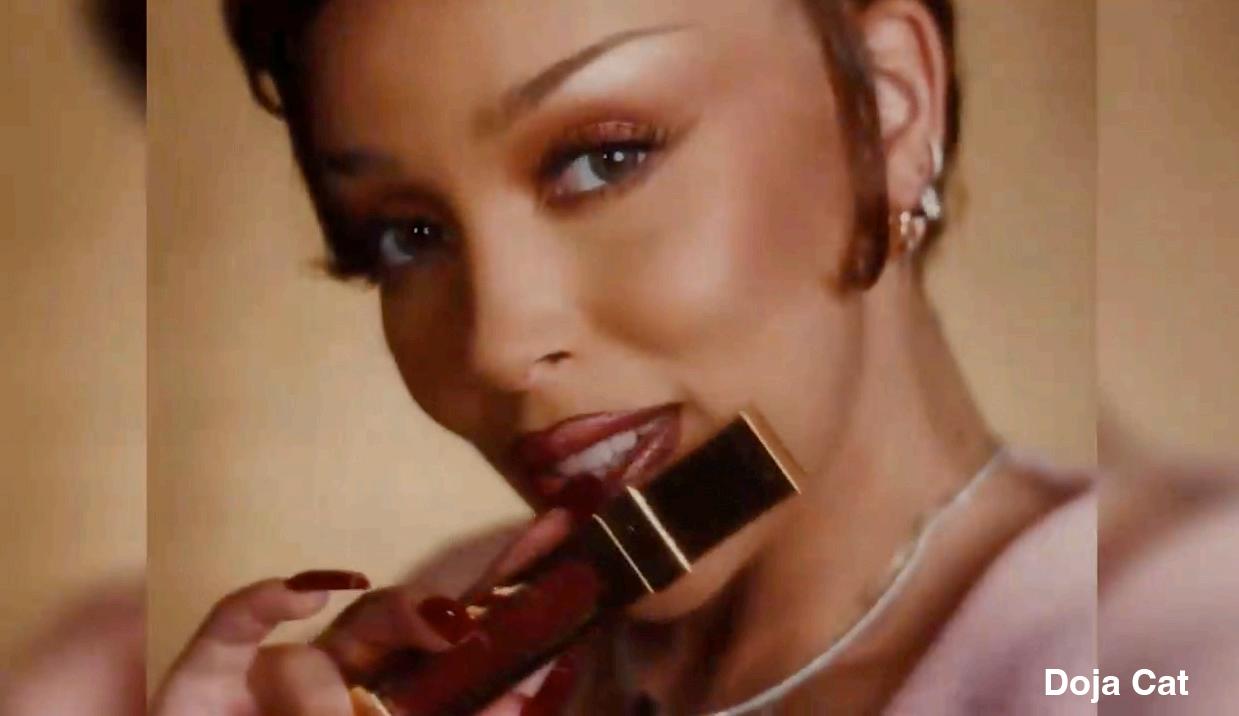
Our thirteenth selection is a throwback to the 90s. It’s the Ruby J Remix of “Baby Got Back” by Sir Mix-A-Lot. I always enjoy getting a good, updated version of a classic hit.
If you follow my articles, you know that one of my biggest pet peeves is when producers and remixers decide to rebrand a song to feature their name instead of the actual or original artist. And our fourteenth track is exactly that. It’s listed as “Freak” by Biscits but in actuality it ain’t nothing but a reboot of Adina Howard’s “Freak Like Me”.
It seems that the 80s sound is really prominent in today’s productions. Haute & Freddy’s “Freaks” sounds like it could have been a Dance track from 1985. This was a cute track for my Halloween set.
Our sixteenth selection is the Matt Moss Remix of the 90s hit “Just A Girl” by No Doubt. Speaking of artists who have had their moment…Gwen Stefani had a great run. After working with Mr. Moss on the release of Jade Elektra’s collaboration with Simone Denny for “Let’s Call It Love”, I started digging through his catalog of remixes and decided to do a video edit for this one. Just wish there had been a Club mix of this one back then.
So, it has not been a secret that one of my latest crushes is on bbno$. I don’t know if he’s just gay-baiting or serious but all I can say is “he can get it!”. His playfully insane flow on his his raps is infectious and his video for “NSFW” featuring Canada’s Drag
Race alumni Jimbo is a fun watch.

Our eighteenth Track is “Gone Gone Gone” by David Guetta featuring Teddy Swims & Tones and I. I really liked “Lose Control” by Mr. Swims. Was never a fan of Tones or that really annoying song “Dance Monkey”. But I don’t mind them as a duo on this particular song. Would I play this without it being requested? Probably not.
One of the most underrated rappers on Club and Pop songs is Q-Tip. His rap was essential to Deee-Lite’s “Groove Is In The Heart” back in the 90s. And his rap on “Galvanize” by The Chemical Brothers back in the 2000s was brilliant. So, I was so happy to get the Chris Lake Remix so I could introduce this gem to a new generation of clubbers today.
Now it may seem really soon for there to be a cover of Lola Young’s “Messy” but believe it or not, I feel Kaszewo’s 2 Step inspired remake is even better than the original. While Lola visually sums up the meaning of the song, this version is what I would dance to.
Our twenty-first selection is the Sefu Miami Bass Remix of “Safe” by Cardi B featuring Kehlani. When I listen to the lyrics I can tell that Offset really fucked up in their relationship. While I find Cardi can be a little brash in her delivery sometimes, I do believe she would be a faithful wife and actually is politically aware of her surroundings. Her warnings and posts about the last U.S. election really set her a few steps above Nicki after the rants about her cousin’s friend’s anatomy during COVID. “Safe” is a release of some of that anger about her failed marriage and I say…”Good for her” on using her platform and art to express herself. I felt it was a clever use of Janet
Jackson’s “Someone To Call My Lover” in Sefu’s production. I found it interesting that the closing shot in the video is of Cardi being executed and the boyfriend finding her body. Let’s hope this isn’t some foreshadowing
I kinda noticed that Megan Thee Stallion has sorta steered clear of this Nicki/Cardi Feud. But that doesn’t mean she’s not sending a message with her single “Whenever” after being mashed up with “Planet Rock” by Afrika Bambaataa & Soul Sonic Force Perhaps she is following in Beyonce’s lead. Don’t respond on social media. Don’t do interviews. Just put it in your music.
And to close out our mix, I quickly did a Relentlessly Touched Vocal for D’Angelo’s cover of “Cruisin’” after his sudden death. He was one of our last true R&B Male vocalists of Neo Soul. His work ethic and study of the greats really showed in his performances. And I always say you cannot move forward without learning your past. So, he brought all that he learned into his music. “Untitled (How Does It Feel)” changed his trajectory in the industry. An unwilling sex symbol, he became more so known for the music video for that song than for his actual talent and vocals. And for him to die so quickly after his son’s mother, Angie Stone seemed so similar to Prince after Vanity died. Such a loss for all of us. Rest in peace, D’Angelo.
